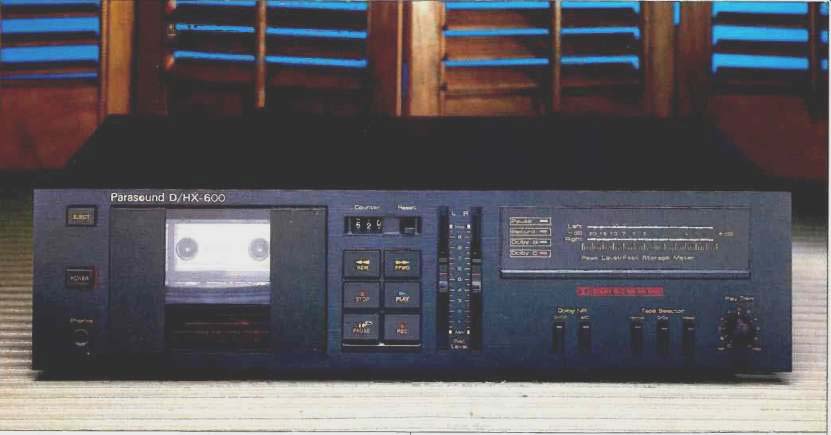
Manufacturer's Specifications:
Frequency Response: 30 Hz to 15 kHz, + 2, -3 dB, with Type I tape; to 15.5 kHz with Type II tape, to 16 kHz with Type IV tape.
Harmonic Distortion: Less than 1% for 400 Hz.
Signal/Noise Ratio (Type II or IV Tape): 55 dB; 72 dB with Dolby C NR
Crosstalk: 48 dB.
Input Sensitivity: 30 mV.
Input Impedance: 50 kilohms.
Output Level: Line, 270 mV; headphone, 30 mW.
Output Impedance: Line, 1 kilohm; headphone, 8 ohms.
Flutter: 0.12% wtd. rms.
Speed Accuracy: Within 2%.
Fast-Wind Time: 85 S for C-60.
Dimensions: 17 1/4 in. W x 4 in. H x 11 in. D (43.7 cm x 10.3 cm x 27.9 cm)
Weight: 12 lbs. (5.4 kg).
Price: $360.
Company Address: 945 Front St., San Francisco, Cal. 94111.
-- --- - - -
The Parasound D/HX-600 cassette deck has Dolby B and C NR, as do most decks these days, and it is one of the relatively few lower priced recorders that include Dolby HX Pro headroom extension as well. Dolby HX Professional was developed by Bang & Olufsen with assistance from Dolby Laboratories, which designed the original HX system. Quoting from a Bang & Olufsen publication:
Although the principles are similar, the aims for the two systems are different. In HX the primary aim is to allow the maximum level of high frequencies to be recorded on tape.
HX Professional has the more fundamental aim of keeping the active bias constant. (Active bias may be defined as the effective bias seen by each frequency in the audio spectrum.) In doing so, all parameters that are affected by a change in bias under static conditions will be stabilized under the dynamic conditions during actual recording.
Dolby HX Professional is similar to Dolby HX in that both systems change the amplitude of the bias signal from the bias oscillator, but the reason for doing so, as well as the method of achieving this, are different. The fact that in doing so all the aims of HX are fulfilled to virtually the same extent is, in effect, a secondary benefit of HX Professional.
HX Professional has several other advantages over HX, primarily in flexibility, and in its universal application. It is a dedicated system, tailored to HX operation only, and it is fully independent of the Dolby NR module and all other electronic circuits in the recorder. It is, therefore, equally suitable for professional use (such as in studio recorders and high speed duplication) and in high-quality cassette recorders.
The Parasound D/HX-600 has two heads, and because such decks have difficulty in meeting the challenge of good high-frequency response, I looked forward to testing this unit. In the meantime, I discovered that it has an even more unusual feature than HX Pro, namely, a "Play Trim" control.
According to Parasound, this is to ensure that the Dolby circuits are given the correct "instructions" in playback. I have written before on the grievous response deviations that can occur when switching Dolby-encoded tapes from deck to deck ("Deck-to-Deck Matching and NR: Straightening the Mirror," August 1986). Factors contributing to poor Dolby tracking when switching tapes include frequency response deviations on the tape itself, differences in Dolby calibration levels, and discrepancies in azimuth alignment.
Even without switching tapes, responses that peak or droop at the highest frequencies without Dolby NR will usually be worse with it. The deviation causes an overall level shift sensed by the NR decoder, and the peaked response ends up getting less treble reduction in playback because of this effect. Parasound states in the deck's owner's manual that the Play Trim adjustment should be made while listening for the best sound quality. There was a possibility that the control was a play-level calibration pot, but proof of that had to wait for the lab tests.

Fig. 1--Record/playback responses with Dolby C MR using "PN/Music" test
signal. Upper traces are for signal at rms (level equivalent to Dolby level,
using (from top) TDK AD-S, Fuji FR-II Super, and TDK MA-XG. Lower traces
are for-20 dB signal using same three tapes. (Vertical scale: 5 dB/div.)

Fig.
2-- Range of Play Trim effects without NR using Fuji FR-II Super tape-Top
trace was recorded at-10 dB and bottom trace at -30 dB. (Vertical scale:
5 dB/div.)
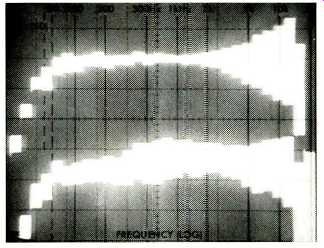
Fig. 3--Same as Fig. 2 put with Dolby C NR.
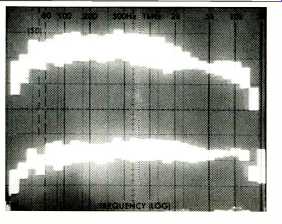
Fig.
4--Effect of Play Trim on frequency deviations with Dolby C NR. Top trace
shows superimposed responses for levels from -10 to -40 dB but without Play
Trim. Bottom trace shows results with Play Trim adjustment. (Vertical scale:
5 dB/div.)
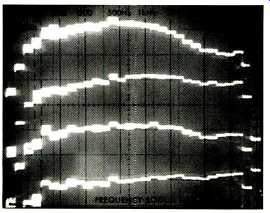
Fig. 5--Effect of Play Trim on frequency deviations caused by mismatch of
Dolby C NR between decks. Top two traces show playback, without Play Trim,
of tapes made on Nakamichi CR-7A at -10 and -30 dB. Bottom two traces show
playback of same tapes with Play Trim adjustment. Both -30 dB traces are
shifted upward for clarity. (Vertical scale: 5 dB/div.)
Control Layout
At the very left of the front panel, from top to bottom, are the eject and power on/off buttons and the headphone jack.
The two buttons are exactly the same size, which could cause some mistakes, but I did like having the eject button at the top edge of the cassette compartment door. Unless a Dolby NR mode has been selected, the D/HX-600 does not have a pilot light per se to show that the unit is on. However, the back of the cassette well does illuminate in a soft green when power is applied.
To the right of the well is a three-digit counter and its reset button, and below them are six transport and record-control pushbuttons. All of these buttons are square and are angled out slightly from the panel, which aids a bit in visibility and actuation. The top two, "Rew" and "FFWD," have double arrows pointing in the appropriate direction. In the second row are "Stop" (with a small red square) and "Play" (with a bluish-green arrow). On the bottom are "Pause" (with a double-bar symbol) and "Rec" (with a red dot). These buttons must be pushed in for some distance to actuate their functions, but they do not latch in, which would help to remind the user what choice was made. Selecting "Pause" turns on an indicator in the meter/display panel.
To the right of the pushbuttons are vertical slider input-level controls extending nearly the full height of the panel.
Because the sliders are fairly close together and the knobs have concave indentations, level adjustments up and down can be made easily for both channels with one finger. I don't know if Parasound considered that possibility, but I liked it.
Next on the front panel is the meter/display area, whose left side is occupied by four indicators that show on/off status for "Pause" (orange), "Record" (red), "Dolby B" (green), and "Dolby C" (red). The horizontal, ladder-type level meters have 12 segments for each channel; they illuminate in yellow-green from "-20" to "-1" and in or- range-red from "0" to "+8." Because of the inclusion of individual markings for + 1 and-1, and for +3 and- 3, there is good resolution around zero. The LEDs above zero have a hold function.
Below the display panel are vertical bar switches for "Dolby NR" ("On/Off" and "B/C") and "Tape Selector" ("Normal," "CrO2," and "Metal"). To their right is the "Play Trim" control, which has a center detent at "0." The scale is marked "2," "4," "6," "8," and "10" on either side of zero, with "Min" next to the "10" at full counterclockwise rotation and "Max" next to the "10" at full clockwise rotation.
The back panel is very simple, with the line in/out stereo pairs the only connections to be made. I removed the top and side cover to assess internal construction. The great majority of the circuitry was on a p.c. board that was about half-chassis size. Above the main board was a smaller one, with a shield-plane below it, which was identified as being the HX Pro circuitry. Although this board was supported by two angle brackets, it was quite springy, with just one screw to hold each bracket to the back panel. All of the parts and the few adjustments were identified. The soldering was very good, and interconnections used multi-pin plugs and sockets. The rigidity was fairly good. The transport was reason ably quiet, and its cam system for play and pause worked well. The construction was on the light side, with a medium-size capstan flywheel. The power transformer was small and was only warm, not hot, after a period of use. I did not observe a fuse, but there might have been one (or a fuse resistor) back under the HX Pro p.c. board.
Measurements
The playback response of the Parasound deck was quite good with 120-4 equalization: all points for both channels were within 2 dB. The deviations with 70-uS equalization varied with the test tape that I used. For reasons I never determined, there appeared to be very high skew with the BASF alignment tape but not with a couple of others I tried. I have seen cases of selective skew before, but this is the first time it appeared with the alignment test tape. There is no marking on the D/HX-600 meters for Dolby level, but playing a Dolby-level test tape resulted in a "+3" on the left-channel meter and a "+1" on the right. A flickering of this indication suggested that the level was very close to the "+1/+3" threshold. Tape play speed was 0.3% fast.
I checked the record/playback responses using my latest version of what I call "PN/Music." Maximum levels in each V3-octave band are close to the maxima that I have measured from any of a large number of CDs. A gentle roll-off starts at about 2 kHz, reaching a shelf at around 5 kHz for levels 7 to 8 dB below the low- and mid-frequency band levels. These levels are constant out to 16 kHz, with a sharp drop above that. In playback, compensating equalization is used to make the display flat except for any response deviations. I know that some readers prefer swept-frequency responses, which appear to be more accurate, but which really aren't when noise reduction is involved.
Although Parasound states in the owner's manual that "Play Trim" would normally be kept at "0" when playing tapes made on the D/HX-600, it wasn't so for most formulations. The record/playback responses were run using Dolby C NR. Many Type I tapes could be well matched to the deck by using the "Play Trim" control. I liked the results with TDK AD-S best of all, and that required a "-1" trim. TDK D was also very good, as were Denon DX3 and Fuji FR-I Super. Fuji FR-II Super with a "+0.3" trim was the best of many Type IIs, with Denon HD7, SKC QX, Sony UX-Pro, and TDK SA very close behind. Of the Type IVs, I liked TDK MA-XG with a "-2" trim the best. I couldn't help but notice that many metal tapes could be well matched, which is sometimes not possible on a lower priced deck. Other good Type IVs for the D/HX-600 were BASF Metal IV, Denon HDM, Sony Metal-ES, and Triad MG-X.
Figure 1 shows the record/playback responses with Dolby C NR using the three preferred tapes. The test levels for PN/Music were set at an rms level equivalent to Dolby level (top three traces) and at 20 dB below that (bottom three traces). There is excellent flatness at both levels for all three tapes, albeit with a noticeable low-frequency roll-off and a sharp cutoff at the high frequencies. Some of these same characteristics are indicated by the data for the-3 dB points listed in Table I. The results showed benefits from both Dolby HX Pro and Parasound's Play Trim. The unswitchable multiplex filter is the major contributor to the sharpness of the high-frequency cutoff.
I decided to take a closer look at Play Trim to get a better sense of its general value. Figure 2 shows the band of frequencies and range of levels affected by rotating the "Play Trim" knob from minimum to maximum. The trials were at -10 and -30 dB without NR. In this case, the effect is the same at both -10 and -30 dB. In Fig. 3, the same test was run, but with Dolby C NR switched in. Notice how the range of levels is increased relative to Fig. 2 at -10 dB (top traces) and the across-the-band effects that result at-30 dB (bottom traces). This proves that Play Trim does indeed precede the Dolby encoder, for more effective compensation when NR is used. Please keep in mind that this is not a bias control, which would affect the tape only in recording.
Play Trim will have an effect on any tape played, no matter what deck it was recorded on.
Figure 4 shows superimposed response analyses for re cording levels from -10 to -40 dB with Dolby C NR. The top trace, without Play Trim, shows responses that varied from very rolled off to fairly flat. The bottom trace shows the results from the same test but with Play Trim in use; it is a significant improvement. Figure 5 presents the playback responses from a recording made on a Nakamichi CR-7A deck at -10 and -30 dB. The top two traces do not have Play Trim, but the bottom two do, and they are much better because of it. (The -30 dB traces were purposely shifted up to allow showing all four traces in one figure.)
Table II lists a number of record/playback characteristics; they are all very good, and the data for erasure (of metal tape), separation, and crosstalk are excellent. In fact, I'm not certain how far below -90 dB the crosstalk is. The bias in the output during recording was very low.
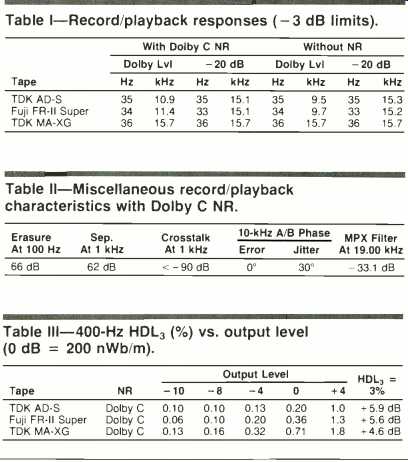
Table I-Record/playback responses (-3 dB limits).
Table II-Miscellaneous record playback characteristics with Dolby C NR.
Table III-400-Hz HDL3 (%) vs. output level (0 dB = 200 nWb m).
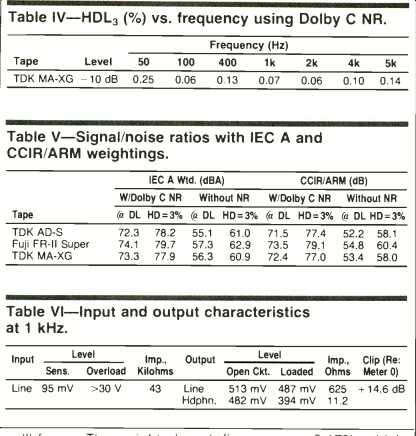
Table IV-HDL3 (%) vs. frequency using Dolby C NR.
Table V-Signal noise ratios with IEC A and CCIR ARM weightings.
Table VI-Input and output characteristics at 1 kHz.
The third-harmonic distortion of 400 Hz was measured at five signal levels for the three preferred tapes with Dolby C NR from -10 dB up to the point where HDL3 reached 3%.
The results shown in Table Ill are fairly good, with the low distortion at-10 dB worthy of note. Table IV gives the results of measuring HDL3 from 50 Hz to 5 kHz at-10 dB, using TDK MA-XG tape and Dolby C NR. The low distortion at the higher frequencies is a good indication of the success of HX Pro in this area.
Table V shows the very good to excellent signal-to-noise ratios obtained with all three formulations. The best results were achieved with Fuji FR-II Super, and the other two tapes were quite close. The metal tape would be the best choice, however, for recording music having considerable high-frequency energy.
Various input and output characteristics of the Parasound deck are given in Table VI. There is nothing to fault in any of them, though some of the numbers do not agree with the specifications. The input sensitivity is a higher voltage but is still acceptable. The line output level and the output impedance are actually better than I not rated 30 mW across 8 ohms at the headphone output, but I would have been surprised if I had-that is a very high power level for tape-deck headphone outputs. All the phones I tried were driven to levels that were at least plenty loud-and sometimes uncomfortably so.
The level meters were 3 dB down at 12.1 Hz and at 16.0 kHz. The meter response time was very short, reaching -1 dB with a 0-dB tone burst of 3-mS duration. A full zero indication required a burst less than 20 mS long. The 20-dB decay time was 0.33 S, much less than the IEC-recommended 1.7 S. The meters gave higher indications on bursts offset in the positive direction and lower indications on bursts with negative offset. Peaks are detected best by meters which give higher readings when there is such a d.c. offset, but the meters' response should be the same for either offset polarity.
The line output's polarity was the same as the input's, both in recording and in playback. The calibration of the meter scales was excellent, with all but one bar within 0.4 dB of actual and several within 0.1 dB. At meter zero and above, there was an automatic peak hold, usually about 1 S.
I felt that the hold was essential with these meters, considering their fast decay time.
The tape play speed varied regularly within ±0.03% limits, though occasionally it went to ±0.05%, which is acceptable but not very good. The play speed increased by about 0.17% when the line voltage was reduced from the reference 120 V a.c. to 110 V, and it decreased by about 0.13% when the voltage was increased to 130 V. These deviations are greater than most other decks' and could be of importance to users with unstable line voltage. Parasound specifies flutter as "0.06% nominal" and 0.12% wtd. rms.
The measured flutter was a consistent 0.11% wtd. rms over the length of a C-90, with no observed basis for the "nominal" figure. The weighted peak figure was ±0.17%, which further indicates just fair performance in this area.
The fast-wind time for a C-60 was 95 S, longer than specified, and it was 142 S for a C-90, which is longer than for any other deck I can recall. Time from tape run-out to stop was 5 S in fast wind and 3 S in play/record. It was possible to switch instantly between fast-wind directions.
Changing to play from fast wind took less than 1 S. It was not possible to go directly from play to record mode, but many more expensive decks do not allow that either.
Use and Listening Tests
The owner's manual has limited detail but does offer helpful comments on making connections and on maintenance and trouble-shooting. Although the discussion of Dolby NR is abbreviated, it provides good suggestions on why Dolby B or C NR might be selected. As I've mentioned, a statement that the "correct setting" of "Play Trim" is at the center detent for tapes made on the D/HX-600 is really in error: the center position is only best for tapes that match the actual setup done by Parasound.
It was a simple matter to drop cassettes into the carrier and take them out again. Access for cleaning or demagnetizing was fairly good with the removable door on, and was excellent with the door off. The carrier seated tapes well, but I would have preferred greater rigidity in the support provided. In replacing the door, I found that a tricky maneuver was required: One must pull out on the door while restraining the carrier in order to get the door to slide back down over the carrier's front. The necessary procedure was not immediately obvious and is not explained in the manual.
All of the controls and switches were completely reliable throughout the testing. At times I did find the "Pause" indicator insufficiently noticeable, leading me to think the deck was in "Stop" mode when it was not. I was favorably impressed by the smoothness of the cam actuations for Play/Record" and "Pause." I did feel, however, that the mechanical action of the transport pushbuttons was rather stiff. I don't have a need for any of the various forms of program scan which some decks offer, but I really did miss having a simple counter-memory-zero stop from rewind mode.
Using Dolby C NR to establish a low-noise background and setting the playback volume high, I found that going into record mode generated an obvious click, going into pause caused a low-level pop, and the final stop created a soft, double clunk. In general, I could set record levels quite easily with the channel sliders and the peak-responding meter display. I did keep wishing that the meter decay time and the peak-hold time were longer.
The first listening that I did was with prerecorded cassettes from Mobile Fidelity Sound Lab, EMI, and others. Play Trim was used to considerable advantage in getting the best overall sound in the playback of Dolby B encoded tapes. I did miss deep bass from Richard Strauss' "Also Sprach Zarathustra," with Fritz Reiner leading the Chicago Symphony Orchestra (MFSL C-522), but the results were really quite good. The lack of deep bass was less apparent on Mozart Overtures, with Neville Marriner and the Academy of St. Martin-in-the-Fields (EMI TCC-ASD 4101). In comparisons with my more-expensive reference Nakamichi CR-7A, the D/HX-600 was not as smooth in sound, nor did it reveal as much detail. There were no indications of play skew problems as had appeared with the alignment test tape.
Most of my listening tests were done with recordings made from CDs using TDK AD-S, Fuji FR-II Super, and TDK MA-XG. Play Trim was used to match each tape in turn. As expected, the metal tape was the most forgiving when recording at higher levels. In the main, I judged the sound to be quite good overall, with accurate frequency response except at the lowest frequencies. A good example of this success and limitation was in the "March to the Scaffold" from Berlioz's "Symphonie Fantastique," with Charles Dutoit and the Montreal Symphony Orchestra (taped from a Lon don CD, 414 203-2).
For an assessment of flutter performance, I taped a Telarc CD of Beethoven's Third Piano Concerto featuring Rudolf Serkin with Seiji Ozawa and the Boston Symphony Orchestra (CD-80063). Listening only to the playback from the Parasound deck, I heard no immediate or continual sense of unwanted flutter. However, comparing the tape playback to the CD, I detected subtle but regular and definite differences in the steadiness of the piano tones.
The D/HX-600's implementation of Dolby HX Pro is very good, with good, flat frequency response using Dolby NR.
The results with metal tape at 0 dB are particularly notable.
The deck also delivers low distortion across the band and good signal/noise ratios, and the unusual Play Trim feature yields important benefits. In my view, the discrepancies between my measured figures and the manufacturer's specifications are not important. For those who consider flutter critical or who desire various convenience features, the D/HX-600 will be found wanting. Overall, however, I judge it to be a good value.
--Howard A. Roberson
(Source: Audio magazine, Mar. 1988)
Also see:
Revox B215 Cassette Deck (July 1985)
Parasound DR40 Receiver (Apr. 1985)
= = = =